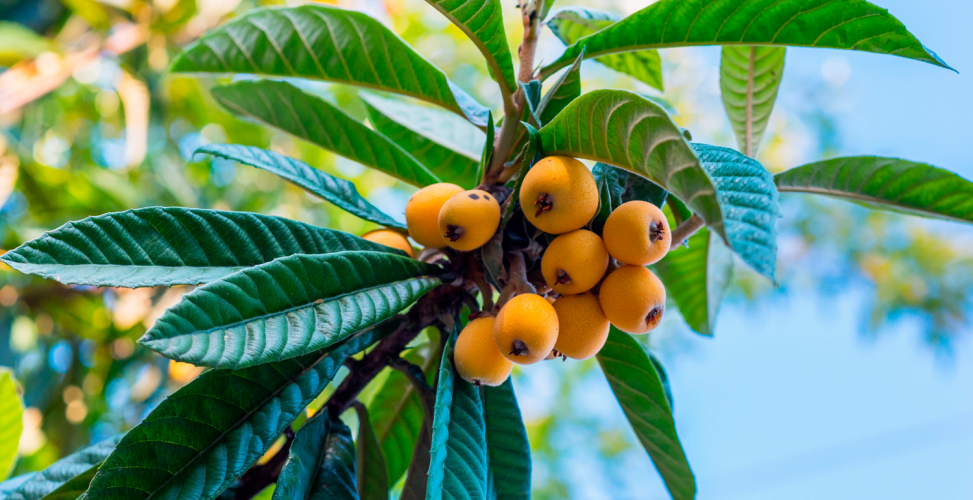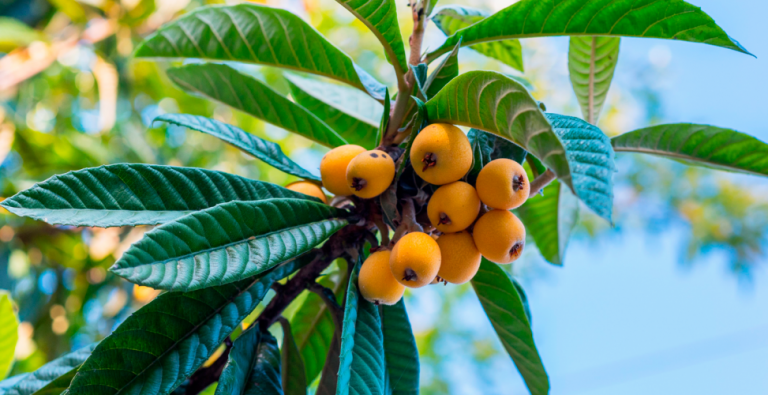Gardeners who are sensitive to their site try to decorate it with exotic flowers, trees, and shrubs. One of these unusual plants is the medlar.

- The medlar fruit has been known since ancient times. It was grown by the ancient Greeks and Romans. Medicines were prepared from it. Plantings with a branchy crown adorned the gardens of the nobles. Historians claim that the homeland of the pine tree in Iran.
- Medlar belongs to the family of Rosaceae plants. The name of the culture came from the Turkic language. It is also called the cup or cone tree, and the fruits are cones or cones.
- In Turkey and Israel, medlar is used for landscaping streets. Some exotic lovers keep the culture like a houseplant.
- In its natural environment, it looks more like a bush with large leaves and thorns on the branches. In cultivated plants, thorns are absent, but they can appear in the medlar of the Germanic species.
- The pine tree grows up to 6-8 m in height. Outwardly, it looks like a nut. The plant prefers a mild climate, cool summers, and warm winters, but in its natural environment, it can withstand severe frosts down to -30 ° C.
- The wood of the medlar is used by folk craftsmen for the manufacture of interior decorations. Medium hardwood. The bark contains pigment. The extract from the bark is used as dyes for fabrics.
- Leaves are wide, oval, up to 30 cm long. The edges are solid, without cuts. The shade is a rich green. The veins are light in young leaves, red in adults.
- When ripe on the tree medlar, fruits and apples grow. They are small in size, covered with a dense protective shell. Young apples have a hard shell. When eaten, it is removed. It becomes thinner in ripe fruits. The shape and color of an apple depend on the variety of culture, it can be round or pear-shaped.
- There are 3-5 large seeds inside the apple. They are triangular, flattened, brown. They also found use in cooking. Seeds are placed in poultry or meat when baked to complement the dish with fruity notes. Distillers add them to their drinks to give them the flavor of Amaretto.
- The seeds are enclosed in a juicy orange or reddish pulp. It contains many vitamins and minerals.
- In total, there are 2 varieties of medlar, Germanic or ordinary, (Mespilus germanica) and Japanese (Eriobotrya japonica), Eriobotrya. Crops differ in the growing season, shape, and taste of the fruit.
- Both crops are grown for landscape design. Japanese variety is preferred for consumption.
- The fruit of a juicy medlar is used raw. Jam, compotes, desserts are made from it.
- The exotic fruit of the Japanese variety looks like a small pear. In color, it is closer to apricot. It tastes like the sweet cherry, hawthorn, sea buckthorn. The pulp is orange, juicy, not tart. The shell is dense, solid. In the ripe fruit, brown blotches may appear on it.
- Medlar of both the Germanic and Japanese varieties produce healthy fruits and leaves. Healing teas are prepared from the leaves. They increase tone, support immunity.
- By the color of the fruit, it can be determined that they are rich in beta-carotene, vitamin “A”, which is essential for eye health.
- The product has contraindications. Its pulp is sweet and sour. The acid can trigger an attack of gastritis. It is not recommended to use it with increased acidity of the stomach, with peptic ulcer disease.

